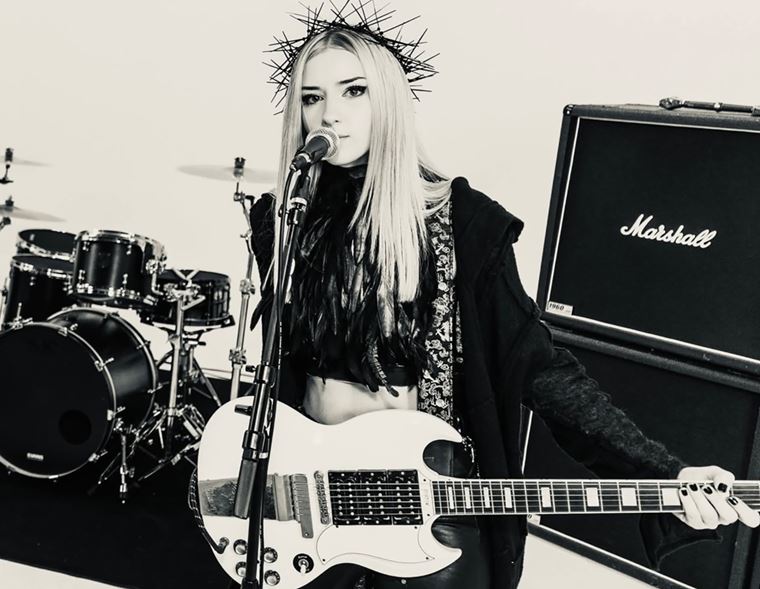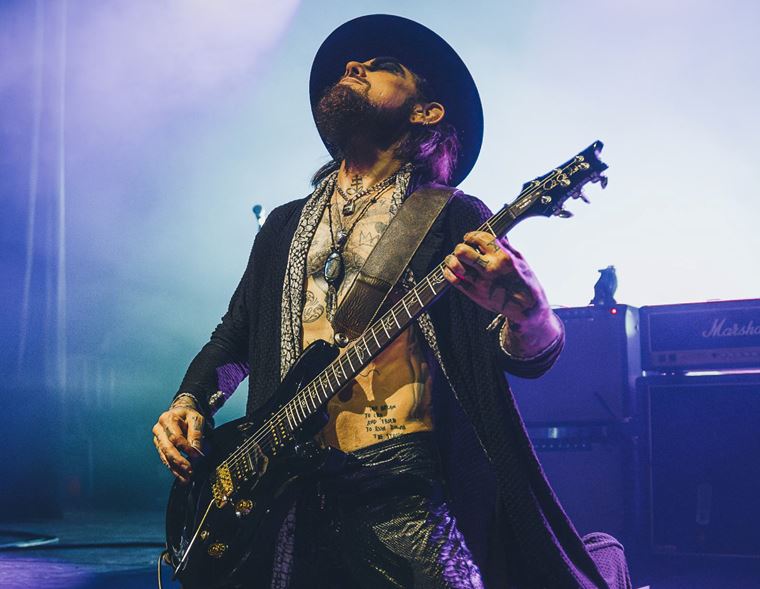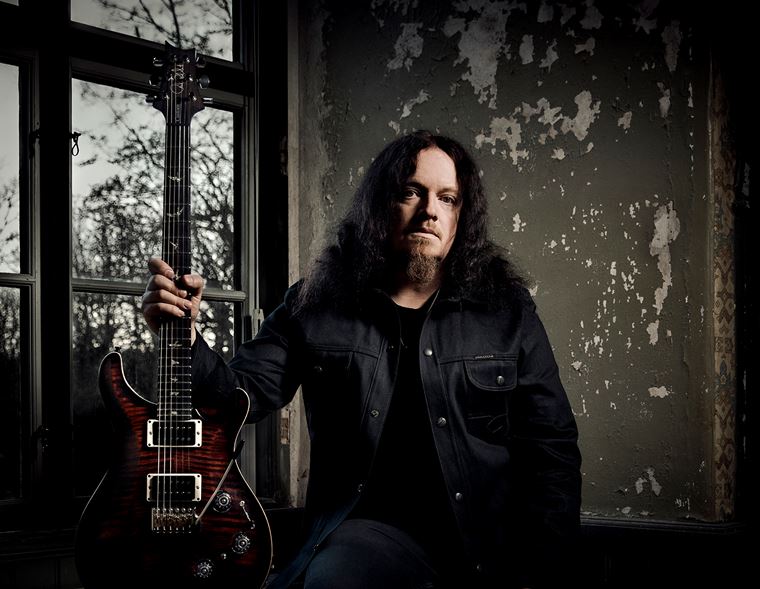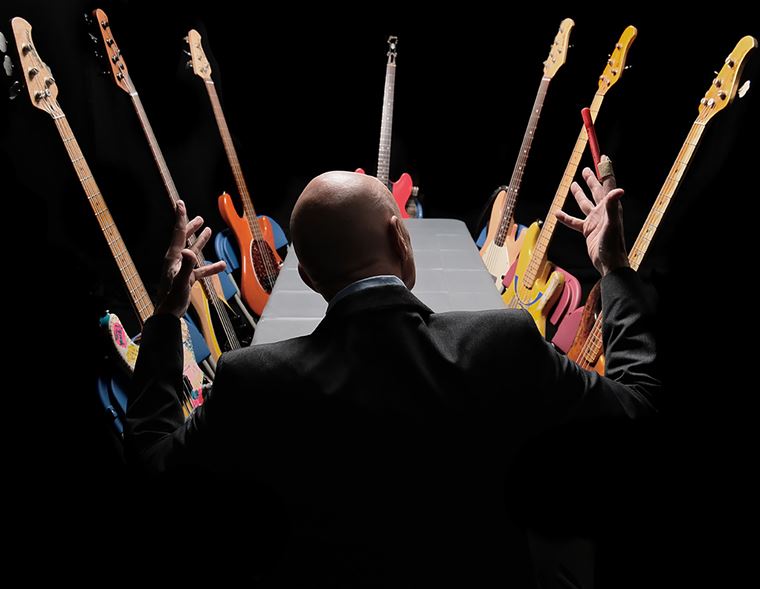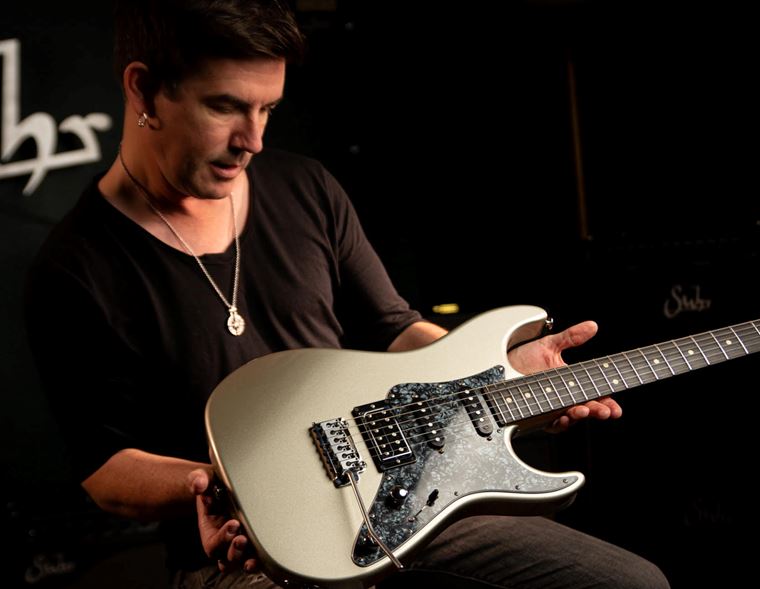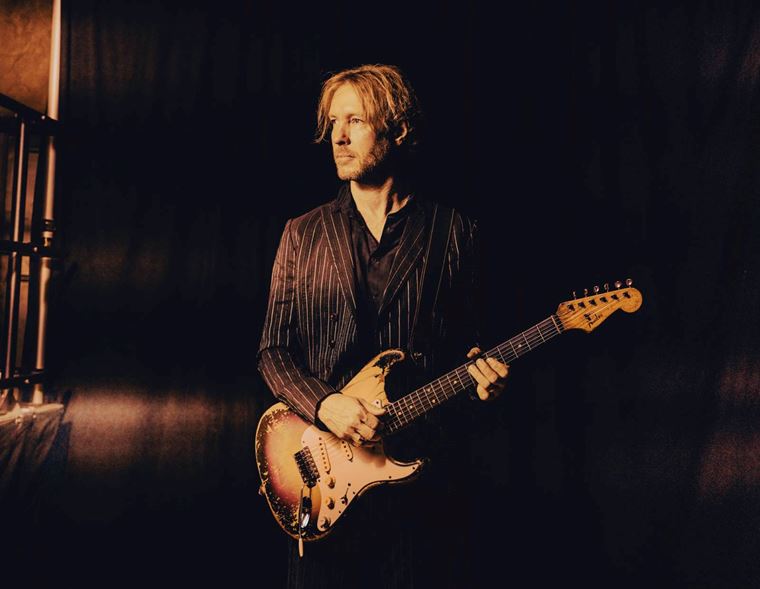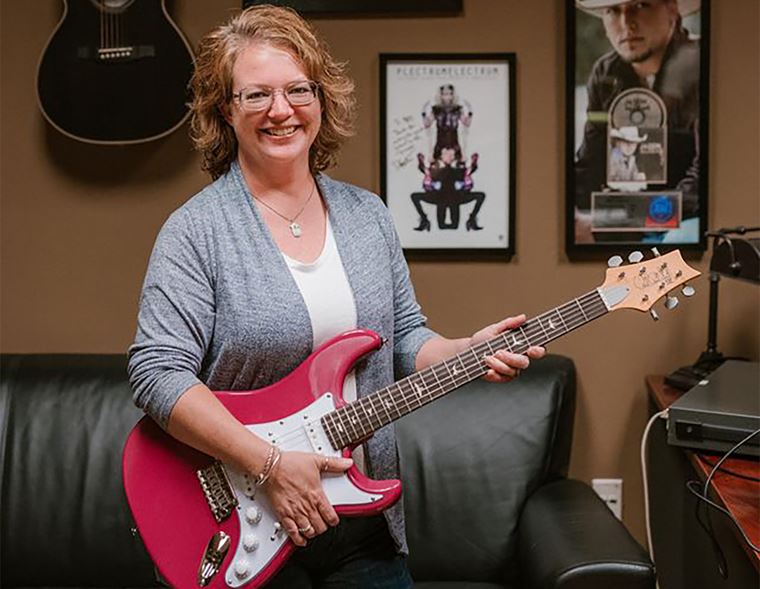HELLOWEEN'S Michael Weikath talks to guitarguitar!
Published on 16 July 2021
Helloween are one of Germany’s premier heavy metal bands. Since 1984, they have blended power with melody, hard-rocking grooves with technical flash, and written an enduring soundtrack for the lives of several generations of metal-hungry music fans. These ‘Fathers of Power Metal’ have sold over 10 million records worldwide and are festival headliners to this day.
Over the years, there have been – as you find with many big bands – several lineup changes. Normally, each of these lineups represents on era for the band, and fans can zone in on whichever of these eras they prefer. Not so with Helloween, because they are back with no less that seven band members from different ‘ages’ of Helloween’s history! Back in the fold is Kai Hansen, beloved vocalist & guitarist from the 1984-89 period, who shares lead vocal duties with two other members: Michael Kiske, the band's vocalist from 1986-93 (he returned in 2016, like Haisen), and Andi Deris, who has sang with the band since 1994!
One man who has been in the band for an uninterrupted stint since the beginning is lead guitarist Michael Weikath. With the release of Helloween’s newest self-titled record, we managed to get hold of Michael (not 45 minutes out of his bed but still full of wisecracks and good cheer) from his home in Spain to talk about this historical line up, the writing process for their bombastic new record, and some tasty facts surrounding his custom made guitars!

(Photo: Martin Hausler)
Michael Weikath Interview
Guitarguitar: So, let’s talk about the new record then! There’s a big line-up this time: there’s 7 of you in the band! How was it in the studio with such a blend of classic members and newest members?
Michael Weikath: Actually, we’re kinda like a family. Now that I’ve seen other interviews of everyone else and what they’ve said, and so I’m not mistaken when I said a few things before. Actually, I’m glad that the other guys also see it that way. It’s kind of like, you have a good knowledge of every character involved, and it makes the whole thing lovable if you see it form a different point of view. Like, in the past, there’s always been ego problems because of fame and bad contracts. Nowadays it’s like, ‘Yeah, he’s got this habit of doing this or that’ and, you know, it’s rather cute (laughs) rather than abominable or something. You would rate it differently beforehand, right? It’s like that.
GG: From what I gather, there are a few different members contributing to the writing. Is it a situation where you all bring in songs, and you all work on each other’s songs?
MW: More or less! What we did was, everyone did their respective demoes on their home systems. Then we met in April 2019 and we played those demoes to each other. Kai Hansen, who took a little longer with Skyfall - till November of that year – that was actually the time when we started the pre-production phase. For two months, we worked over all these things, all the details, arrangements, tunings, tempos and whatever. That took quite some time and when it was finished, we went in to record the final drums on 24 track analog tape.
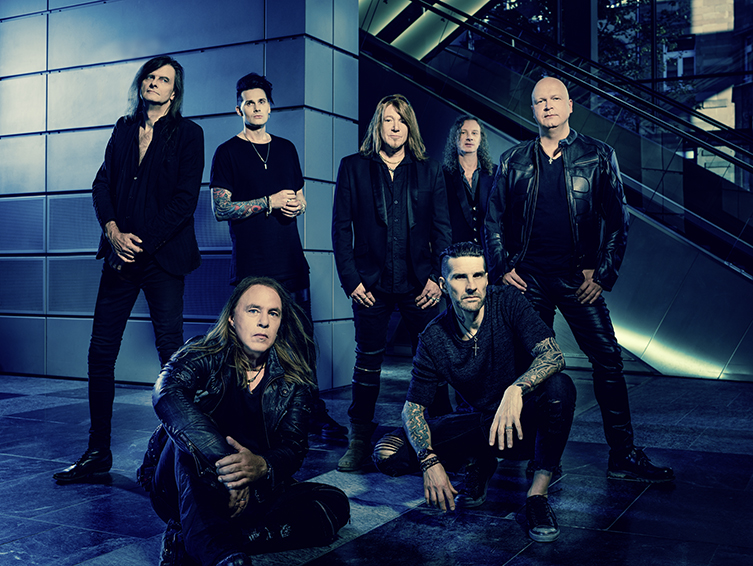
(Photo: Martin Hausler)
GG: Cool! In that case, when everybody is involved with the process of writing, say a track like Down in the Dumps, which I believe is one of yours...do the other members have an equal say on how this song develops or does the writer have veto?
MW: Yes, the writer always has the final say in a way, except someone would run into a situation where everyone would say, ‘You know, your song just bloody sucks!’ (laughs) right? Then it’s, ‘No, but I think it’s amazing!’ and the rest are thinking it’s a bunch of bollocks. Luckily, it didn’t really happen that way. It happened in different ways, like, ‘Oh, this is a pretty nice B-side!’
I’m lucky: I brought across all the stuff that I wanted to bring across and I have a fair say in those things. It always depends on what you are able to gather together, from the violins hanging up in the heavens, if you want to get to that level and put in in your demos or whatever, if that comes across as very convincing, then you’re on the lucky side.
GG: Certainly. Of course, with any band where there are a number of guitar players, there can sometimes be issues about who plays what, where and how. You have three guitarists! Was that ever a difficult thing to manage?
MW: Not really, I mean, we are lucky. I mean, we have similar playing styles. As the readers may know, you can’t take just any 3, 4, 5 guitarists, put them together because they would differ, in big ways sometimes. One guy might have a vibrato in his fingers that goes really cool and smooth, and he would really fit with another one who would go like (mimes a wider vibrato sound). Just yesterday I had a listen to Gary Moore. I think I’ve always known him quite well from what there was, and now there’s this posthumous album they put out. It’s got a track on there that’s called Love Can Make a Fool of You. He’s doing his feedback thing and he’s actually doing vibrato faster than I would’ve remembered: I’ve seen him perform many, many times.
GG: Yeah.
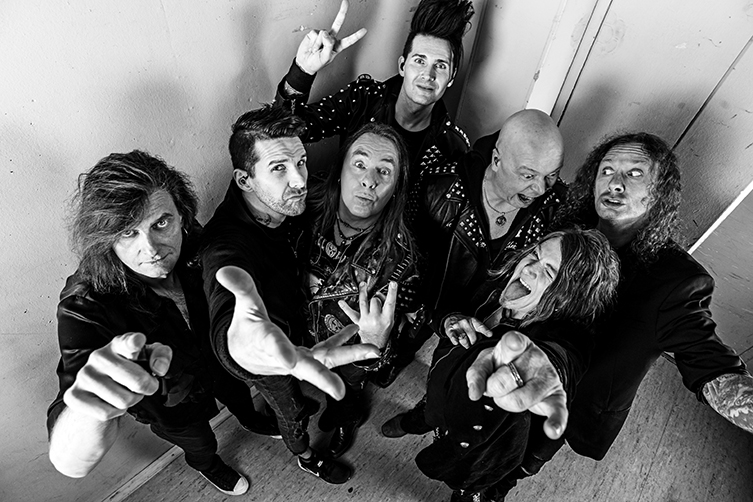
MW: The album’s called How Blue Can You Get. On that track that I mentioned, if they’d added choirs and things, it could have been a monster of a track. Now it’s real simple and basic with some guitar and Hammond organ, that’s about it. And so, that would have suited...the way he plays is on the faster vibrato style already, but still in the area of ‘it’s the right thing to do’. Its arguable (with more than one player) that if one goes, ‘I do my tones like this’ and the other goes ‘I do my tones like this’, like if one guy goes for a lot of mids and the other guy goes, ‘Actually, I hate mids’, you’re never going to match, ever. Right?
GG: Yeah.
MW: We all prefer a particular tone that goes into, I don’t know, Scorpions, Michael Schenker, whatever. Then we go, ‘Oh, that’s a pretty nice tone there!’ and we tend to agree on those things. When the producer comes and says, ‘I’ve come to spread the guitars here in the stereo field, what do you say?’, then everybody goes, ‘Yeah, yeah, all right!’
"Yes, the writer always has the final say in a way, except someone would run into a situation where everyone would say, ‘You know, your song just bloody sucks!"
We went to Marshall this time because that’s what we used in the beginning, in the 80s. Then, ever since The Dark Ride album, we had the Triple Rectifier on there and then afterwards it was an Engl almost all of the time. These things, they sound quite different, and then you go in with three guitarists and you do your hodgepodge of tones and stuff, an everyone expects that thing to be great, impressive, but at least all the tonal work was right this time around. We all match, and that’s the most lucky thing about it.
GG: I understand. A lot of the guitar playing in Helloween is quite technically demanding. Even though you’ve been a professional guitarist for decades, do you find you still have to practice in order to keep up that level of playing?
MW: Yeah, there’s a few turns that actually, I gotta admit, I can’t play! Certain arpeggios or whatever, I just don’t have the techniques on the right hand. I’m doing other things, that more technically able players than I am will probably never be able to do. Like, develop a particular tone or do some bending or whatever. There are some people who incorporate all that stuff and it takes you a long time to actually get there. I’ve always been on the lazy side with my right hand, like if you expect me to do anything motoric or whatever, that’s never gonna work out. Talking about workouts, you know, I hate repetitive tasks. If I had to do push-ups all the time, that would bore me to hell! Already after ten tries, it’s something that is making me go crazy! So if I had to replicate something like that on the strings, I mean, there was a time when I was required to actually count what I was doing, because someone had composed it that way. Actually, I could have puked, you know? (laughs) I wanna relax and have a good time playing stuff and I wanna be able to cope with it. And not count and calculate, you know?
GG: Yeah, yeah!
MW: But then, I could have gone to a classical orchestra and they would have said, ‘Okay, you are just too bad, you will not be admitted here at this orchestra. Go and become a...whatever. (laughs) Remove the trash, that’s better for you!’ So, I wouldn’t have been suited for a classical orchestra but I’ve never tried: I’m just trying to do some sort of Rock n Roll band, that’s the difference.
GG: Yes indeed. Totally! So, with your playing, would you say it’s more to do with your left hand? Is that your strong point?
MW: Maybe? I don’t know, maybe that’s fucked up as well! No, but coming back to the question before, there are bits where you just have to familiarise yourself before you go to play live because there may well be that your little fingers are too slow if you don’t train them just moments before you start the show time or whatever. As I said in another interview, I have a tiny list of things to think about before a show: remember this bit; are you aware of how the tones go? And are you aware of the speed? And so on. It’s a good thing to check on and eventually you do it before just to get the movement. The older you get, the slower they get! They used to be a lot faster, they got so you couldn’t see them!
"There was a time when I was required to actually count what I was doing, because someone had composed it that way. Actually, I could have puked, you know?"
GG: Ok! Since we were talking about tones, let’s talk about guitars! I’ve seen you play Flying Vs and others. What do you prefer? And what did you use for the recording this time out?
MW: Well, as it happens, this is the one we used for the rhythm guitars on Out For the Glory (Michael reaches over and picks up a lovely light blue, custom-made Flying V with zebra pickups and a Floyd Rose tremolo) and it’s also been doing the Flying V-centric solos. I mean, we’ve done a few that have sounded a bit like a Flying V player and that’s actually what I did with this.
Apart from that, we had a Cherry Sunburst ’58 Gibson reissue, that we used for all the other rhythm guitars, as far as I was concerned. As for Kai Hansen, I don’t know what guitar he took, or Sascha. I had that guitar new, built by a pal of mine who I got to know after a show. Actually he’s a painter and he wanted to know if I was interested in him doing some designs on guitars. I said, ‘No, no, but this example guitar you have here – he brought with him a black Flying V - you seem to be capable of building these things. I would like two blue Flying Vs in that manner! And he said, ‘Oh, I’ve never done that for real!’ and I said, ‘Then this is the first time, you’ve got to!’ (laughs) As it happened, it turned out to be amazing and sounded really close to the Les Paul. Of course, they’ve got very similar pickups – PAFs – and this one is mahogany. We even went to a store to get these shitty brown switch heads, you know? (points to the switch tip of his Flying V)
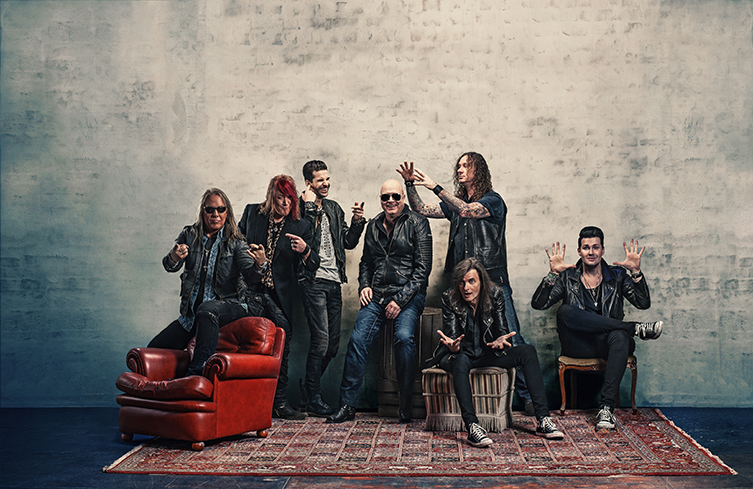
GG: Nice! Good attention to detail. And that has a Floyd Rose tremolo on it as well, I see. Do you use the tremolo much, or is it more for the tuning stability?
MW: Both, because you have the option. Actually, this is a Schaller Lockmeister. I think they sound different. I’ve got myself a Fernandes superstrat from the 80s, for 178 Euros. I’ve always been kind of envious of the thing that Kai Hansen had back then and I always thought: I had that Revolver, which I though was an amazing guitar but I found it so boring or spiritless, or whatever. I mean, how mistaken I was, but I sent it back to Fernandes three times and they always sent it back each time and said ‘We find no fault in this guitar!’, and then I was stuck with that.
I wanted to have that Superstrat, so the guitar doctor from where we rehearse put a Lockmeister in there and it had that overall, I don’t know, sound that it does because of the metal it’s made of. We put another ’59 PAF pickup in that Superstrat guitar and played it and were like, ‘Wow!’ So, I used that for the rehearsals and everything because it felt so good. It was a bit more on the high side with the screechy frequencies, kinda like a Strat because it is a Strat but it’s supposed to be like a humbucker guitar, so it should be sounding rounder. On two occasions, I was like, ‘Nah, that’s too clanky!’, but that’s whatever. And so we went on to use the Lockmeisters, I wanted to say, so whenever I get guitars today equipped with a Floyd Rose, it’s going to be a Lockmeister because I think they sound very good. Yeah, it’s for show and it’s for fun. Luckily, I happen to have a few Les Pauls and I even had two Les Pauls built because I wanted an ‘Axcess’ one in gunmetal grey and I have a white one, like vanilla Custom Les Paul with a Floyd Rose Lockmeister tremolo. It’s called a ‘Lass Paul’, like it’s a blonde lass!
GG: Haha, nice! I like it!
MW: You know? I got another one in red, and it’s called ‘Lead Paul’. They were made for the possible tour last year, I wanted to use them then. The guy who built them (Igor from VIV guitars) gave himself some pressure to get those things finished and he was finished in November 2019. Then he couldn’t send them over here because of covid restrictions. I had to wait for those guitars almost half a year.
GG: That’s no good! At least you’re happy with them. So, what kind of string gauge are you using on these?
MW: Oh, these are that set that goes to 56, the XL pack of D’Addario. We used to use Pyramid strings because they are good and whatever, but D’Addario strings have a .020 G-string, which is better for me, because me with my pranks, I’m always over-bending. I’ve done that in the past and you can hear that in live recordings, it’s what guitarists do: me too!
We have one set of guitars tuned to D and another set of guitars into D#. For that, I’m using two different sets: for the D#, it’s the slightly less strong sets. And actually, nickel: I’m not so good with other kinds of metal. It’s like, I don’t know, it’s bruising the fingers, or I just don’t feel it, or maybe my body composition doesn’t respond well with those kind of metals (laughs). I’m out there with simply nickel, it sounds the way you would expect it. If you want to have outlandish Saturn or Jupiter sounds, you can use, I don’t know, aluminium, because that’s very good for Space Jazz (laughs), that may well be but I’m not going to use those.
GG: Fair enough! I saw, when you showed me your white Les Paul, there was a grey pick there. Was that a Dunlop Max-Grip?
MW: Yeah, we went kind of back to that. Kai Hansen played with them all those years ago. I tried the other tortoise ones, you know, the Tortex ones in Orange. Then I went to the slightly thicker ones, the Yellow ones. It was good because they don’t slip off the finger so easily. But yes, we went back to these very grey Dunlop ones. In fact, this is a 1.0mm and that’s it. I get along with these better because they have a graspy surface. It was when Kai Hansen came back to the band. We were playing stuff and I thought, it’s probably a good idea if you just take the same picks, you know? We’ve done so many tours and had so many experiences with this pick. We used to have the 0.88mm, I think in the past. This is just a reliable overall pick that you can get almost everywhere in the world. These other guys who use those small Jazz picks, they play better than me, so maybe that’s a matter of the pick!
"There was a subway station in Hamburg where somebody had graffitied onto the wall: ‘Ah, that good old Wishbone Ash!’ I was like, ‘Alright, that’s a statement!'"
GG: Hahaha! I doubt it, but who knows? Now, the overall sound of Helloween’s music, I would say, is both very powerful and very melodic. Do you think that’s essential to get the Helloween sound, to have both of those elements?
MW: Yeah. It’s like this, you know: we have Sid Vicious, who did My Way, a Frank Sinatra swing number, as ‘metal’, so to say. Back then, I always thought, ‘Yeah, something like this’, something like this with anthemic melodies and distorted guitars. I thought, ‘why not play anthems and stuff? Why not!’ Back then, you had people who were not very imaginative or whatever, and they didn’t do it. But that’s how it comes about.
We were influenced obviously by the Beatles, that’s how it started, but there was Thin Lizzy, right? And then there was The Scorpions, with the twin vocals. That’s who we were influenced by, particularly The Scorpions and In Trance, that record. Later on, Wishbone Ash. It took me some time because I was always interested but there was never, ever anyone who I could borrow those records off! Actually I asked the owner of the studio in Hanover where we recorded, ‘You are the master of collecting thousands of albums: could you record me a few Wishbone Ash albums that you deem essential?’ And he did, so I was there listening to Wishbone Ash all day! (laughs) There was a subway station in Hamburg where somebody had graffitied onto the wall: ‘Ah, that good old Wishbone Ash!’ I was like, ‘Alright, that’s a statement!’ (laughs)
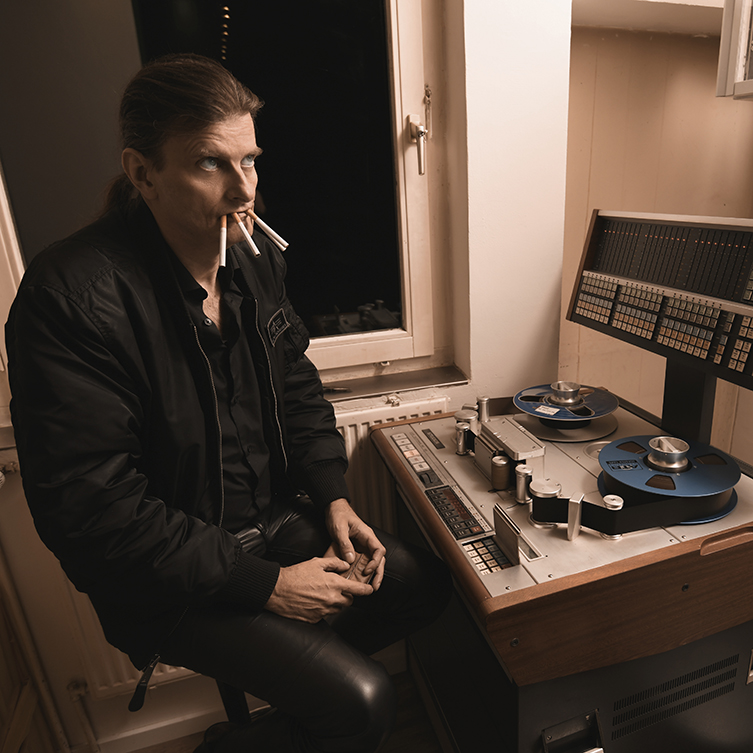
GG: It is! Hahaha! So, this new Helloween record brings together a lot of different eras within the band’s history. Do you reckon this would be a good starting point for newer fans who haven’t heard you before?
MW: Oh yes, possibly! Yeah, sure. As a starting point, yes. I remember, back then, I got into Deep Purple and I knew Woman from Tokyo and then I knew they’d done something like Smoke on the Water. Someone played that riff for me and went, like, ‘Yeah, that’s Deep Purple!’ And then at that point, I got myself the Deep Purple In Rock album, and so then yeah, afterwards you have to get Fireball, Who Do We Think We Are, the whatever, and you had to study that stuff! So there seems to be a slight change of members and the music is now totally different! (laughs) Are they the same? What happened there? And Uriah Heep, too. ‘Oh, there must have been a bass player who died, sadly’. But you wouldn’t even know the circumstances because back then there was no internet: you would have to ask people in the know. Like, ‘Whatever happened to Gary Thain?’ ‘Ah, he got electrocuted at a microphone’. ‘Oh, yeah, damn.’ It’s like that little thing for fans: if they take this record as a starting point that we have right now, that’s surely possible. Then they could go backwards and dig into what kind of madnesses we came up with, right?
GG: Yeah, certainly! And once they take this record as a kind of gateway, they’ve got an amazing world of Helloween music just waiting for them.
Now, just to tie things up, we’re all waiting for the world to get back to normal again of course, so we can get out to concerts again. Is the plan for Helloween still to go out on tour?
MW: Yeah we have those dates out and , you know, I sure hope there’s going to be some divine intervention and that it comes to pass and they take place. I just hope for the best. There’ got to be some point where everything is back to normal, as it was, and so I don’t know if that point is yet, but hopefully by then.
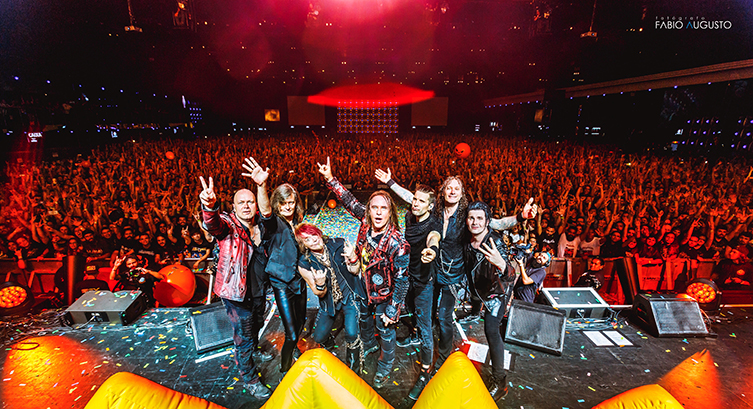
(Photo: Fabio Augustino)
Hopefully we’ll see the guys from Helloween over here before too long, but in the meantime, you can listen to their newest record, Helloween, wherever you get your music. It’s big, it’s bold and it goes at some pace! Fans of powerful , melodic hard rock are sure to love it. Also, keep up with the band by heading over to the official Helloween website. They may well be coming to a city near you in the future!
We like to thank Michael for his time and his excellent sense of humour! Thanks to Joe from Nuclear Blast for setting us up, and thank to you for talking five and having a read! We have tons of interviews right here on our site, so please do click through to the guitarguitar interviews page to check out some more!
Until next time
Ray McClelland


